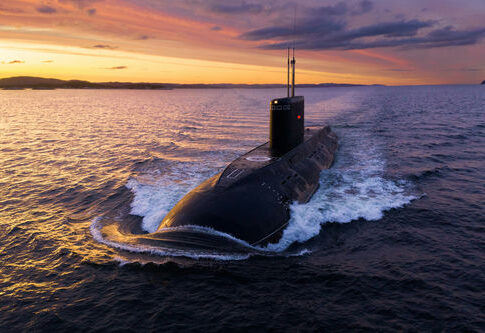President Trump’s public deployment of two U.S. nuclear submarines near Russia sends a clear message: American strength and deterrence are back on the world stage—no more hiding our arsenal or bowing to foreign threats.
Trump’s Nuclear Submarine Deployment: A Return to Deterrence
President Donald Trump confirmed the presence of two U.S. nuclear submarines “in the region” near Russia, a move directly responding to inflammatory warnings from former Russian President Dmitry Medvedev and escalating Russian military aggression. This unprecedented public acknowledgment signals a marked change from previous administrations’ reluctance to project American strength, especially following years of perceived weakness and indecision. Trump’s order, announced August 1 and confirmed days later, demonstrates a willingness to use every tool—military, diplomatic, and economic—to defend national interests and restore deterrence against adversaries emboldened by globalist and leftist policies.
The timing of Trump’s decision is critical. As Russia and China engage in joint naval drills in the Sea of Japan, the U.S. is simultaneously ramping up military exercises with Japan and regional allies. Trump’s deployment of nuclear submarines, coupled with a Friday deadline for Russia to agree to a Ukraine ceasefire, positions the U.S. as an unambiguous force against further aggression. The president’s ultimatum is clear: comply or face new sanctions and tariffs, with the added warning of secondary sanctions for any nation buying Russian energy. This coordinated use of military presence and economic pressure stands in stark contrast to the prior administration’s approach, which often relied on vague warnings and ineffective diplomatic overtures.
Ceasefire Deadline and Diplomatic Maneuvers: Raising the Stakes
Alongside the military escalation, Trump’s administration is leveraging diplomatic channels with unusual transparency and urgency. U.S. special envoy Steve Witkoff is slated to visit Moscow ahead of the ceasefire deadline, delivering the administration’s terms directly. This convergence of military posturing and diplomatic engagement is designed to maximize pressure on the Kremlin while offering a narrow window for de-escalation. Even as Kremlin spokesman Dmitry Peskov attempts to downplay the submarine deployment, the message from Washington is unmistakable: American patience with Russian brinkmanship has run out. The explicit linkage between military movement, a ceasefire deadline, and economic threats reflects a strategic, coordinated response rarely seen in modern U.S. foreign policy.
Russian officials are attempting to frame the U.S. moves as routine and non-threatening, emphasizing their own restraint. However, the reality is that Russia’s military and economic alliance with China has deepened, complicating the security situation for U.S. allies in both Europe and the Pacific. The administration’s actions are designed to break this cycle—reassuring U.S. allies, deterring adversaries, and reestablishing America’s role as a global leader willing to defend its interests with clarity and conviction. By publicly acknowledging the presence of nuclear assets, Trump’s team is challenging both Russia and China’s assumptions about American resolve after years of retreat and appeasement.
Expert Cautions, Risks, and the Conservative Case for Strength
Security analysts and nuclear policy experts have cautioned that explicit nuclear signaling, such as Trump’s public announcement, increases the risk of miscalculation and escalation between nuclear powers. The Nuclear Threat Initiative and other experts have urged restraint, highlighting the dangers of brinkmanship. However, many U.S. officials and conservative observers argue that such deterrence is essential after years of failed globalist strategies that emboldened America’s adversaries and left allies uncertain about U.S. commitments. The deployment is not just about nuclear posture—it is about reclaiming America’s role as a credible power on the world stage, defending the Constitution, and restoring national security after years of leftist mismanagement.
While the risk of escalation cannot be ignored, Trump’s supporters view this as a calculated response to a deteriorating global security environment, not reckless saber-rattling. The administration’s willingness to pair military strength with direct diplomatic engagement and enforceable deadlines marks a significant shift from the past, one that conservative voters have demanded. The coming days will determine whether this bold strategy yields the desired ceasefire in Ukraine or further escalates tensions, but the underlying message is clear: the era of apologizing for American power is over. With U.S. submarines positioned “where they have to be,” conservative Americans are seeing a return to common-sense leadership and unapologetic national defense.
Sources:
Statement from the Nuclear Threat Initiative on President Trump’s Nuclear Submarines Order
Trump confirms 2 nuclear submarines are ‘in the region’ to counter Russia

